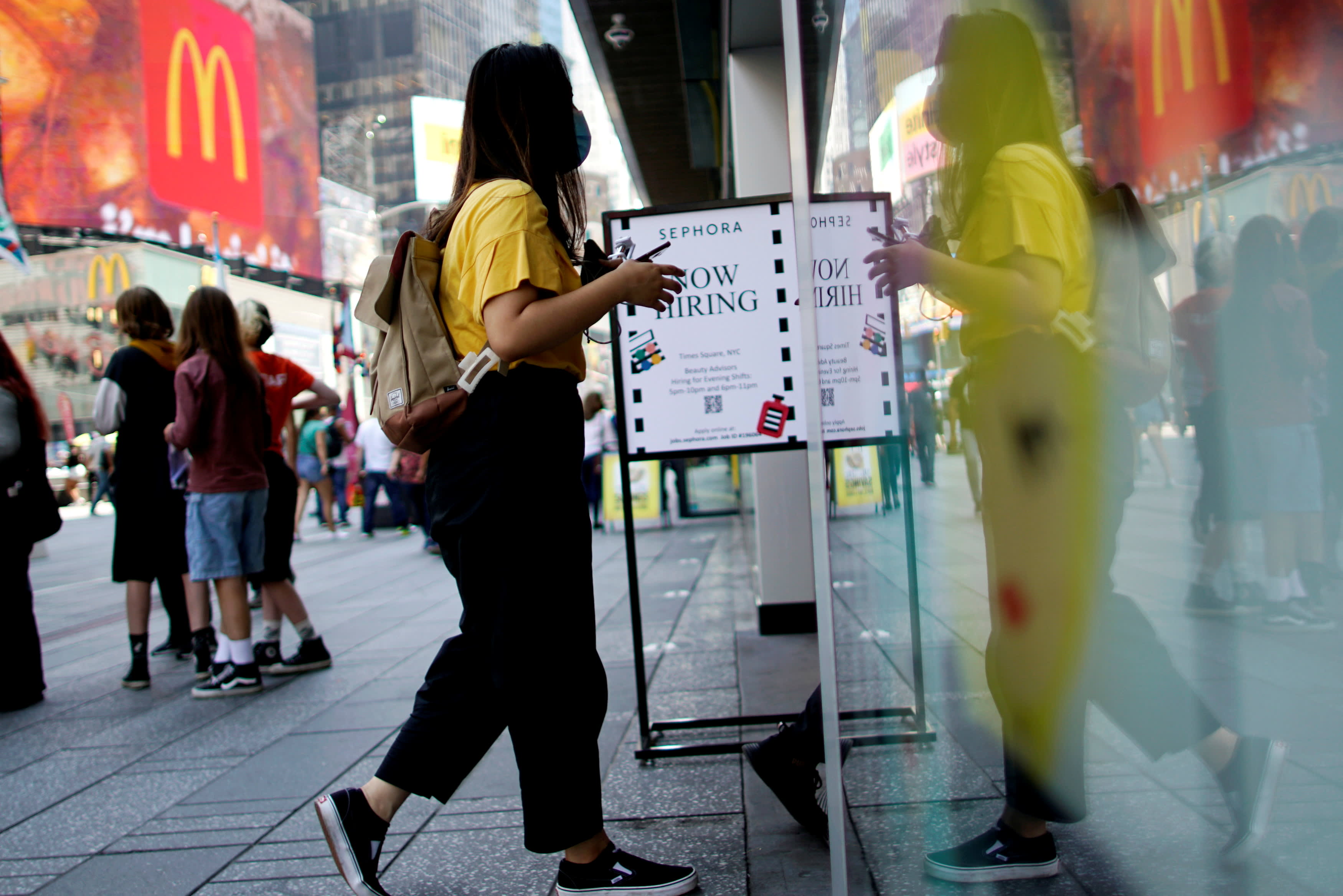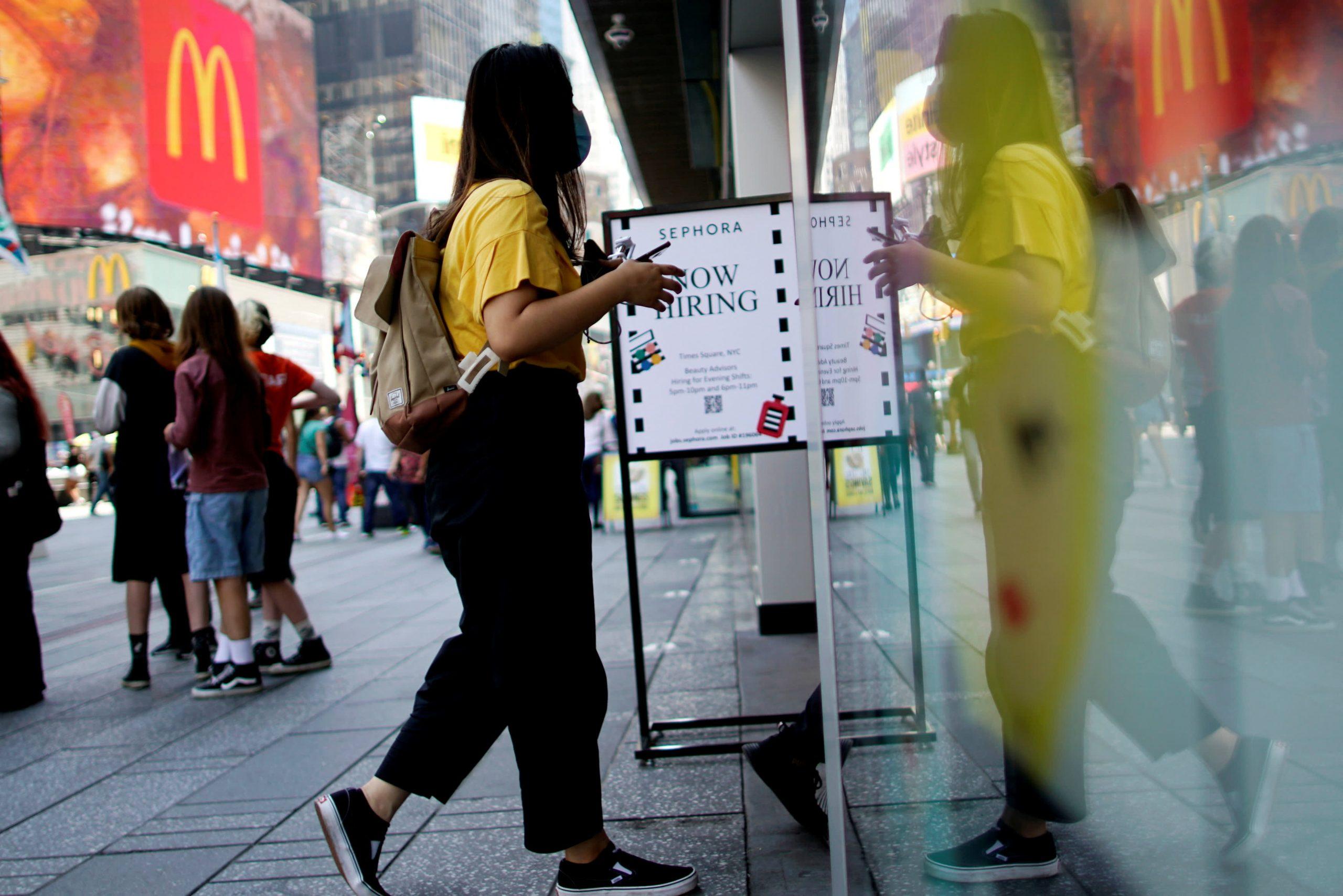
Tržište rada u SAD-u je skočilo u listopadu, a platni spiskovi koji se ne bave poljoprivredom porasli su više od očekivanog, dok je stopa nezaposlenosti pala na 4.6%, izvijestilo je u petak Ministarstvo rada.
Nepoljoprivredni platni spiskovi porasli su za 531,000 za mjesec, u usporedbi s procjenom Dow Jonesa od 450,000. Očekivalo se da će se stopa nezaposlenosti smanjiti na 4.7%.
Privatni platni spiskovi bili su još jači, porasli su za 604,000 jer je gubitak od 73,000 državnih poslova povukao brojku u naslovu. Dobit u listopadu predstavlja nagli porast u odnosu na rujan, koji je dobio 312,000 radnih mjesta nakon što je početna procjena Zavoda za statistiku rada od 194,000 doživjela značajnu reviziju naviše u izvješću u petak.
The numbers helped allay concerns that rising inflation, a severe labor shortage and slowing economic growth would tamp down jobs creation.
“This is the kind of recovery we can get when we are not sidelined by a surge in Covid cases,” said Nick Bunker, economic research director at job placement site Indeed. “If this is the sort of job growth we will see in the next several months, we are on a solid path.”
Markets rallied strongly on the news, with the Dow up nearly 350 points in early trading and government bond yields mostly lower.
The critical leisure and hospitality sector led the way, adding 164,000 as Americans ventured out to eating and drinking establishments and went on vacations again as Covid numbers fell during the month. For 2021, the sector has reclaimed 2.4 million positions lost during the pandemic.
Other sectors posting solid gains included professional and business services (100,000), manufacturing (60,000), and transportation and warehousing (54,000). Construction added 44,000 positions while health care was up 37,000 and retail added 35,000.
Wages increased 0.4% for the month, in line with estimates, but rose 4.9% on a year-over-year basis, reflecting the inflationary pressures that have intensified through the year. The average work week edged lower by one-tenth of an hour to 34.7 hours.
The unemployment rate drop came with the labor force participation rate holding steady at 61.6%, still 1.7 percentage points below its February 2020 level before the pandemic declaration. That represents just shy of 3 million fewer Americans considered part of the workforce and is reflective of ongoing concerns about staffing levels.
“While the strength of employment was an encouraging sign that labor demand remains strong, labor supply remains very weak. The labor force rose by a muted 104,000, which is not even enough to even keep pace with population growth,” said Michael Pearce, senior U.S. economist at Capital Economics.
However, one metric that the Federal Reserve watches closely, the participation rate among so-called prime age workers 25 to 54, ticked higher to 81.7%.
Treasury Secretary Janet Yellen weighed in on the report with a Twitter thread Friday afternoon in which she said the administration’s aggressive fiscal policies that have pumped in more than $5 trillion to the economy helped stave off more dire consequences from the pandemic.
“Bold fiscal policy works,” Yellen wrote. “A rebound like this was never a foregone conclusion. When our administration took office back in January, there was a real risk that our economy was going to slip into a prolonged recession. Now our recovery is outpacing other wealthy nations’.”
Even with the rebound, the Bureau of Labor Statistics’ survey of households in October showed job holders rising by 359,000, leaving the employment level about 4.7 million below its pre-pandemic level.
A separate measure of unemployment that incudes discouraged workers and those holding part-time jobs for economic reasons fell to 8.3% from 8.5%. That rate was 7% before the pandemic.
The report comes amid heightened concerns about the state of the labor market, particularly a chronic shortage that has left companies unable to fill positions to scale back production and cut hours of operation.
Companies have been increasing wages and adding other incentives as the working share of the potential labor force operates well below its pre-pandemic level.
Since adding more than a million jobs in July, the labor market had slowed sharply through the rest of the summer, with sizeable letdowns in August and September as economists greatly overestimated growth in both months.
However, revisions showed that the numbers for those months weren’t quite as dismal. Along with the boost from September’s initial count, August’s final reading came up another 117,000 to 483,000.
Concerns linger, though, that the U.S. economy is slowing. Gross domestic product increased just 2% in the summer months, falling short of even the reduced expectations for gains during the pandemic-era recovery.
Recent data, though, has shown a progressive drop in weekly jobless claims, the result in good part from enhanced unemployment benefits expiring. Data on Thursday showed productivity is running at a 40-year low and the trade deficit notched another record high, passing $80 billion for the first time.
Earlier this week, the Fed said job growth is strengthening enough for the central bank to begin cutting its monthly bond purchases, a cornerstone of its efforts to boost the economy during the pandemic. However, Chairman Jerome Powell stressed that the picture must continue to improve before the Fed starts raising interest rates.


 Signal2forex.com - Najbolji Forex roboti i signali
Signal2forex.com - Najbolji Forex roboti i signali




